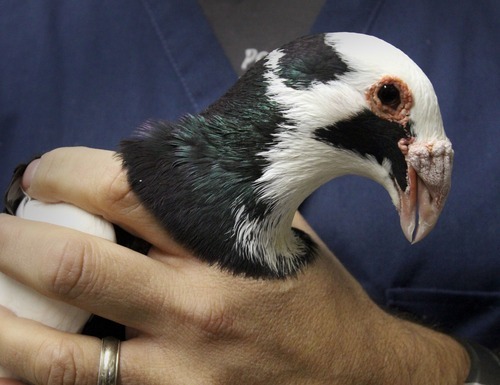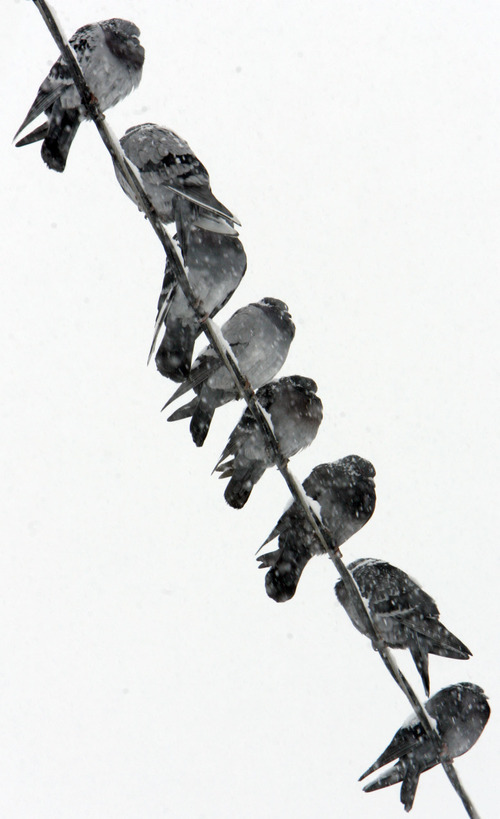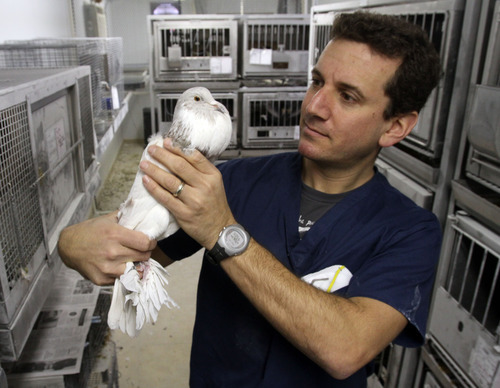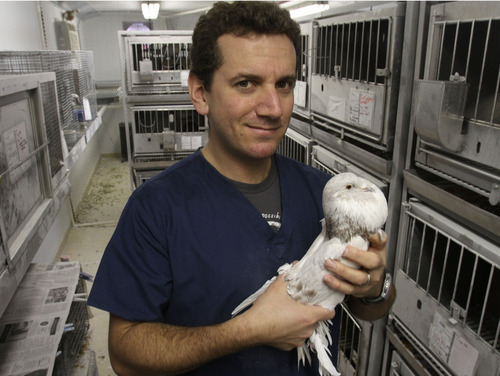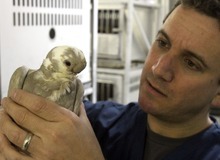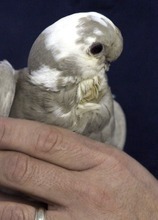This is an archived article that was published on sltrib.com in 2012, and information in the article may be outdated. It is provided only for personal research purposes and may not be reprinted.
Rock pigeons — winged vermin that leave their droppings on city sidewalks — have been selectively bred for at least 3,000 years, resulting in an array of weird traits, from tiny beaks and feathery feet to puffy chests and long necks that "zither."
The lowly Columba livia can be a rather regal specimen with more than 350 breeds on record, exhibiting greater variation than any other bird. University of Utah biologist Michael Shapiro believes pigeons harbor "a massive reservoir for biological diversity," which he and his colleagues are harnessing to shed new light on how genes work.
"This was [Charles] Darwin's favorite model for natural selection," said Shapiro, an assistant professor of biology. "The variations among breeds are mirrored in the wild. The same processes that build a pigeon build every other organism as well."
Armed with a five-year, early-career grant from the National Science Foundation that is worth almost $1 million, he set up the Utah Pigeon Project.
One picture emerging from the research indicates breeds with common features may be genetically distant, while birds that are related can look completely different, according to Sharpiro. This is one of many conclusions reached in his lab's first study, published last week in Current Biology.
"This is the debut of the pigeon as a evolutionary model organism," Shapiro said.
His team tends a roof-top loft populated with some 90 highly bred pigeons, such as the English pouter, African owl pigeon, the scandaroon, and the Budapest short-face tumbler. Local breeders donated these birds, which are retirees from the show circuit or individuals who couldn't measure up in competition.
"As pigeon breeders, we are interested in what you can see in the birds. [The U. researchers] are diving into the DNA and figuring out where things are located in the structure of the bird," said Jim Oldham, president of the Utah Pigeon Club. "The more we know as breeders the more we realize we don't know about these birds."
Oldham has provided the U. with breeds called starlings, archangels and frill backs, pigeons with curly feathers. "In the show-pigeon world, there are standards of perfection. The birds are bred toward that standard," he said.
Participating in the new U. study were several postdoctoral researchers and students, including Elissa Mulroy, who gathered and organized feather samples and designed the protocols for extracting their DNA.
Mulroy, then an honors biology major, stumbled into the project her sophomore year when one of Shapiro's students visited her biology class to recruit research assistants. At the time she knew nothing about pigeon breeding.
"I thought I was going to be grabbing things off the street," she said. Mulroy solicited feathers from breeders around the world and mailed them packets with instructions on how to pull sample feathers and return samples along with information about the birds' breed, coloring and gender, if known.
"They have to be tail or flight feathers," she said, because the most robust sources of DNA are found in the shafts of the largest feathers. "We had a great response from the pigeon [breeding] community. We collected over 1,000 samples, from Indonesia, the Middle East, Africa."
Mulroy said her three-year stint in Shapiro's lab was the hallmark of her U. experience, helping her develop the persistence that goes into scientific research.
"It was an amazing opportunity," said Mulroy, now a first-year medical student at Creighton University. "It very much helped me get into medical school and to excel in medical school."
The new study analyzed DNA from 361 individual pigeons representing 70 breeds and two "feral" populations, one living in Salt Lake City under a freeway bridge and another living in Scotland. Shapiro visited pigeon shows in Europe to gather blood and feather samples, and photographed hundreds of birds.
The study also determined that the genetic profile of homing pigeons, also called racing homers, is heavily represented in feral populations. Up to 20 percent of racing pigeons don't return from competition, suggesting that they join their feral brethren, and that their traits, such as agile flight, serve them well for life on the streets, according to Shapiro.
"They don't have fancy feathers on their feet. There's not a lot of inbreeding," he said. "They are closer to the wild."
But the key insight was that observable differences among pigeon breeds does not reflect the extent of their genetic overlap. For example, pouters and fantails — two breed groups with vastly different physical traits — are genetically similar, perhaps due to common geographic roots in India.
Shapiro's research is ongoing with the goal of identifying the genes responsible for specific traits.
"By understanding which genes are controlling these structures in pigeons we can then go out in the real world and understand which genes are underlying normal diversity in the wild, normal and abnormal diversity in other animals including humans, even human diseases," Shapiro said.
Funding for the study came from Burroughs Wellcome Fund, the National Institutes of Health, the U. and Onorio Catenacci, a Michigan pigeon breeder. Co-authors are doctoral candidates Sydney Stringham and Edward Osborne; postdocs Jinchuan Xing, and Jaclyn Aldenhoven, and undergraduates Elissa Mulroy, David Record and Michael Guernsey.
bmaffly@sltrib.com —
It's your chance Want to learn more?
I Feb. 4 • The Grand Circle Pigeon Club hosts Utah's final show of the season in Hurricane.
Feb. 29 • University of Utah biologist Michael Shapiro will discuss his research at the U.'s Science Night Live, a scientific showcase geared toward a general audience. The 5:30 p.m. event is at Keys on Main, a downtown Salt Lake City bar at 242 S. Main St. It's open to members of the public who are 21 and over.



